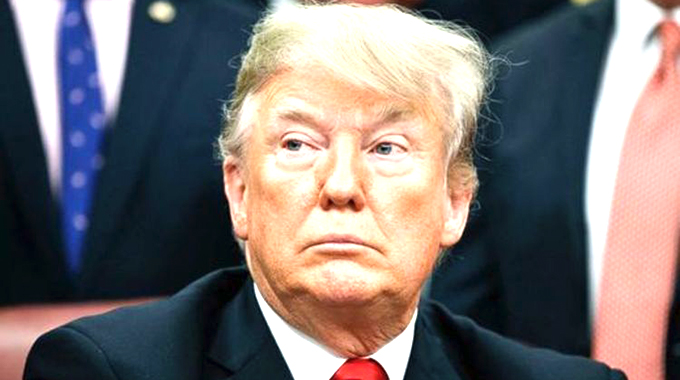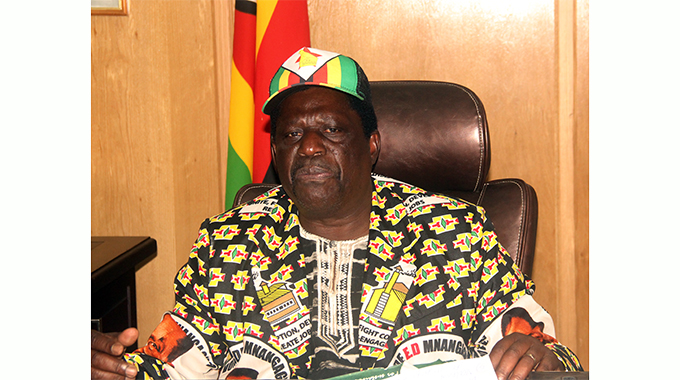China-US trade friction: Dialogue, cooperation is the only solution

Ambassador Guo Shaochun Special Correspondent
Whenever I read the regular press briefing by the Chinese Foreign Ministry these days, I find the most frequently asked questions are about the trade war between China and the US. The Chinese and international media all come to focus on this issue and it also has become an important topic for discussion on various occasions.
The State Council Information Office of the Chinese Government released a white paper, on June 2, titled “China’s Position on the China-US Economic and Trade Consultations”. It is the right document to read for us to gain a comprehensive understanding about this issue.
Why has the United States waged a trade war against China?
Since the new US administration took office in 2017, it has trumpeted “America First” , adopted a series of unilateral and protectionist measures and regularly wielded tariffs as a “big stick” and coerced other countries into accepting its demands, causing disruption to the global economic and trade landscape. Specifically targeting China, in August 2017 it launched a unilateral investigation under Section 301. Turning a blind eye to China’s unremitting efforts and remarkable progress in protecting intellectual property and improving the business environment for foreign investors, the US issued a myriad of slanted and negative observations, and imposed additional tariffs and investment restrictions on China, provoking economic and trade friction between the two countries.
The Strategies and tactics of the United States in waging a Trade War against China
Maximum pressuring and backtracking
Looking at previous media coverage on the past 11 rounds of trade talks, it’s easy to see clearly which side has been flip-flopping all along. In May last year, China and the US reached consensus on trade and issued a joint statement in Washington, DC. But just a few days after that, the US abandoned the agreement. In December last year, the two sides reached consensus on the value of China’s purchases from the US, but in the following talks the US wantonly rejected the agreement and asked for more. It is never China that backtracks and breaks commitments; it is the US that provoked the trade disputes, not China; it is the US that fired the first shot in raising tariffs, not China; it is the US that repeatedly resorted to maximum pressuring, not China.
Intending to intervene China’s sovereign affairs
From late March to early April 2019, the working teams of the two countries held another three rounds of high-level consultations and made substantial progress. Following numerous rounds of consultations, the two countries had agreed on most of the issues. Regarding the remaining issues, the Chinese government required mutual understanding and compromise for solutions to be found.
But the more the US government is offered, the more it wants. Resorting to intimidation and coercion, it persisted with exorbitant demands, maintained the additional tariffs imposed since the friction began, and insisted on including mandatory requirements concerning China’s sovereign affairs in the deal, which only served to delay the resolution of remaining differences. On May 6, 2019, the US irresponsibly accused China of backtracking on its position to shift the blame for the inconclusive talks onto China. Despite China’s fierce opposition, the US raised the additional tariffs on US$200 billion of Chinese exports to the US from 10 percent to 25 percent, which represented a serious setback to the economic and trade consultations. On May 13 the US announced that it had launched procedures to slap additional tariffs on remaining Chinese goods, which are worth around US$300 billion.
Launching a technology war against China
With the resumption of the Sino-US trade war, the United States found it difficult to bring the Chinese economy to its knees by imposing tariffs, so it set its sights on China’s enterprises. On May 15, the Bureau of Industry and Security of the US Department of Commerce announced that Huawei Technology Co. Ltd. had been put on a “blacklist” and banned the sale or transfer of US technology to Huawei.
To cooperate with the technology war, for some time certain US politicians have been fabricating rumours on Huawei without providing any convincing evidence as required by other countries. There have been growing criticism at home in the US over the market fluctuations and disruptions to industrial cooperation caused by the trade war and science and technology war initiated by the US.
Under such circumstances, those US politicians, who have been trying to mislead the public by wilful lies, are even attempting to incite an ideological conflict. According to some German media, after years of review, the UK, Germany and the EU failed to find any back-door in Huawei products. Security loopholes, however, have often been detected in US company Cisco’s equipment, with 10 back-door cases revealed since 2013. Since the PRISM incident, the US has always kept silent on evidence-based accusations of its cyber attacks and cyber theft.
The cases of the PRISM program and Alstom vividly tell the world that even similar ideologies do not prevent the US from taking unjustifiable measures against its allies. Presuming other’s behaviour by one’s own pattern, the US has been smearing foreign companies in an attempt to gain an unfair competitive advantage. But it has failed to produce any solid evidence. The findings of the European side have proven Huawei’s innocence and exposed the lack of legitimacy of the US suppression of foreign businesses with state power.
China’s reaction and position
In response to the economic and trade friction unilaterally initiated by the US since March 2018, China has had to take forceful measures to defend the interests of the nation and its people. At the same time, committed to resolving disputes through dialogue and consultation, China has engaged in multiple rounds of economic and trade consultations with the US in an effort to stabilise the bilateral commercial relationship.
China’s position has been consistent and clear — that cooperation serves the interests of the two countries, that conflict can only hurt both, and that cooperation is the only correct choice for both sides. Concerning their differences and frictions on the economic and trade front, China is willing to work together with the US to find solutions, and to reach a mutually beneficial and win-win agreement.
However, cooperation has to be based on principles. There are bottom lines in consultations. China will not compromise on major issues of principle. China does not want a trade war, but it is not afraid of one and it will fight one if necessary. China’s position on this has never changed. However, some people in the US seemed to have misjudged the current situation and underestimated China’s determination and will to defend its rights and interests. They were still muddying the waters and making impossible demands. It was only natural for China to oppose and resist that.
The economic and trade relations between China and the US, the two biggest economies in the world, are of great significance to the two countries and the global economy. The US should have worked with China and shouldered its responsibilities for global growth. But on the contrary, it insisted on staging a trade war unilaterally and repeatedly increased tariffs on Chinese goods against standing consensus while China has kept full sincerity for the consultations. The international community has its fair judgment on who is the initiator of the latest round of a tariff war, the rule-breaker in free trade and the generator of risks in global economy.
China is an innovative and diligent nation. It has created a highly-sophisticated civilisation and contributed significantly to human progress over the course of 5 000 years. Since the founding of the People’s Republic in 1949, and in particular since the beginning of reform and opening up in 1978, China’s scientific and technological undertakings have passed through a series of phases. They started from a difficult beginning, forged ahead in the course of reform, and have now achieved multiple breakthroughs featuring a variety of innovations.
These achievements have won worldwide recognition. Historical records confirm that China’s achievements in scientific and technological innovation are not something we stole or forcibly took from others; they were earned through self-reliance and hard work. In 2017, total R&D investment in China reached RMB1,76 trillion, ranking second in the world. The number of patent applications reached 1,382 million, ranking No. 1 in the world for the seventh consecutive year.
The number of invention patents granted reached 327 000, up by 8,2 percent year-on-year. China ranks third in the world in terms of valid invention patents held. China has always pursued international technical cooperation with mutual benefit and win-win as the basic value orientation. China’s economic development has benefited from international technology transfer and dissemination. International holders of technology have also reaped enormous benefits from this process. China encourages and respects voluntary technical cooperation between Chinese and foreign firms based on market principles.
It strongly opposes forced technology transfer and takes resolute action against intellectual property infringement. Accusing China of stealing intellectual property to support its own development is an unfounded fabrication. Accusations against China of forced technology transfer are baseless and untenable.
Trade protectionist measures of the US side will have some impact on our economy, but we can totally overcome it. China has the confidence and capability to guard against any external risks and impacts. In the first quarter this year, China’s GDP grew by 6,4 percent year on year, which is more than expected. In particular, domestic demand has become the main driver for growth.
Last year, consumption contributed 76,2 percent of our economic growth. In its recent World Economic Outlook report, the IMF downgraded its outlook for global economic growth to 3,3 percent while upgrading China’s growth to 6,3 percent from 6,2 percent. China was the only country that got upgraded in the forecast among all major economies. With trade partners all around the world, China is turning more rapidly into a strong trading nation. Many countries would like to share China’s development dividends. If some country does not want to do business with China, others will soon fill in the vacancy.
In China, over the past four decades of reform and opening up, enormous achievements have been made in economic and social development. As foreign investment environment keeps improving, China has become one of the most popular destinations for global investment for many consecutive years. According to the World Bank’s Doing Business 2019 report, China has moved up over 30 places in the ease of doing business rankings.
According to the 2019 Business Climate Survey released by the American Chamber of Commerce in China, around 80 percent surveyed business representatives said the investment environment in China has improved or stayed the same; 62 percent of them ranked China as the first or top-three investment destination worldwide. Latest statistics from relevant Chinese authorities show that the number of foreign companies newly set up in China in 2018 topped 60 000, up by 69,8 percent.
China has a well-developed industrial system, growing capability for scientific and technological innovation, the largest middle-income population and a huge market for domestic consumption and investment. With every confidence in our economy, following our own timetable and roadmap, we will continue to advance the reform and opening up and pursue high-quality growth for steady and sustained progress.
Foreign enterprises are welcome to increase their investment in China and we will continue to foster an investment and business environment that is more stable, fair, transparent and predictable for them. At the second Belt and Road Forum for International Cooperation, President Xi Jinping announced that China will take a series of major steps to promote higher-standard reform and opening up. We will expand market access for foreign investment, increase the import of goods and services and implement in real earnest opening-up policies. This will surely provide new opportunities for enterprises worldwide to invest and operate in China, and contribute to the free trading system and growth in global trade.
The pressing task at the moment, which is also our hope, is that the US will work with China to meet each other halfway and strive for a mutually-beneficial agreement on the basis of mutual respect. It serves the interests of both China and the US and is the common aspiration of the international community. As we believe, it takes sincerity to make a consultation meaningful. Judging from what the US did in previous talks, there are two things that must be made clear. First, the consultation needs to follow the principle of mutual respect, equality and mutual benefit. Second, words must be matched with deeds.
The bullying practice towards Zimbabwe
The trade war is one form of American hegemonic act and power politics against China and some other countries and here in this country the hegemony is reflected in the around 20 years of US sanctions against Zimbabwe. The sanctions, though, are claimed to be just against 141 individuals and entities, have undermined the environment for Zimbabwe’s economic development, for instances, obstructing the country’s application for necessary loans from international financiers, promotion of foreign direct investment and the transfer of foreign currency, leading to economic decay, shortage of medicines, even loss of lives of innocent people.
President Emmerson Mnangagwa has been bravely enduring the pressure and recently said “the Zimbabwean economy was greatly affected by the sanctions imposed by Western countries. Under the new dispensation, we have said, with or without sanctions, we must focus on developing our economy.”
China will never bow to the pressure from any big power. No one can force its plan on China. No challenge can hold back China’s development. Looking forward, China is committed to credible consultations based on equality and mutual benefit. China will continue to get support from all the friendly countries including Zimbabwe in this just cause against hegemony and power politics. The principle of mutual respect, equality and mutual benefit will prevail.
Cooperation will benefit both China and the US while confrontation serves the interest of neither. In a world of inter-connected development, we are all in the same boat and need to strive for win-win results.








Comments